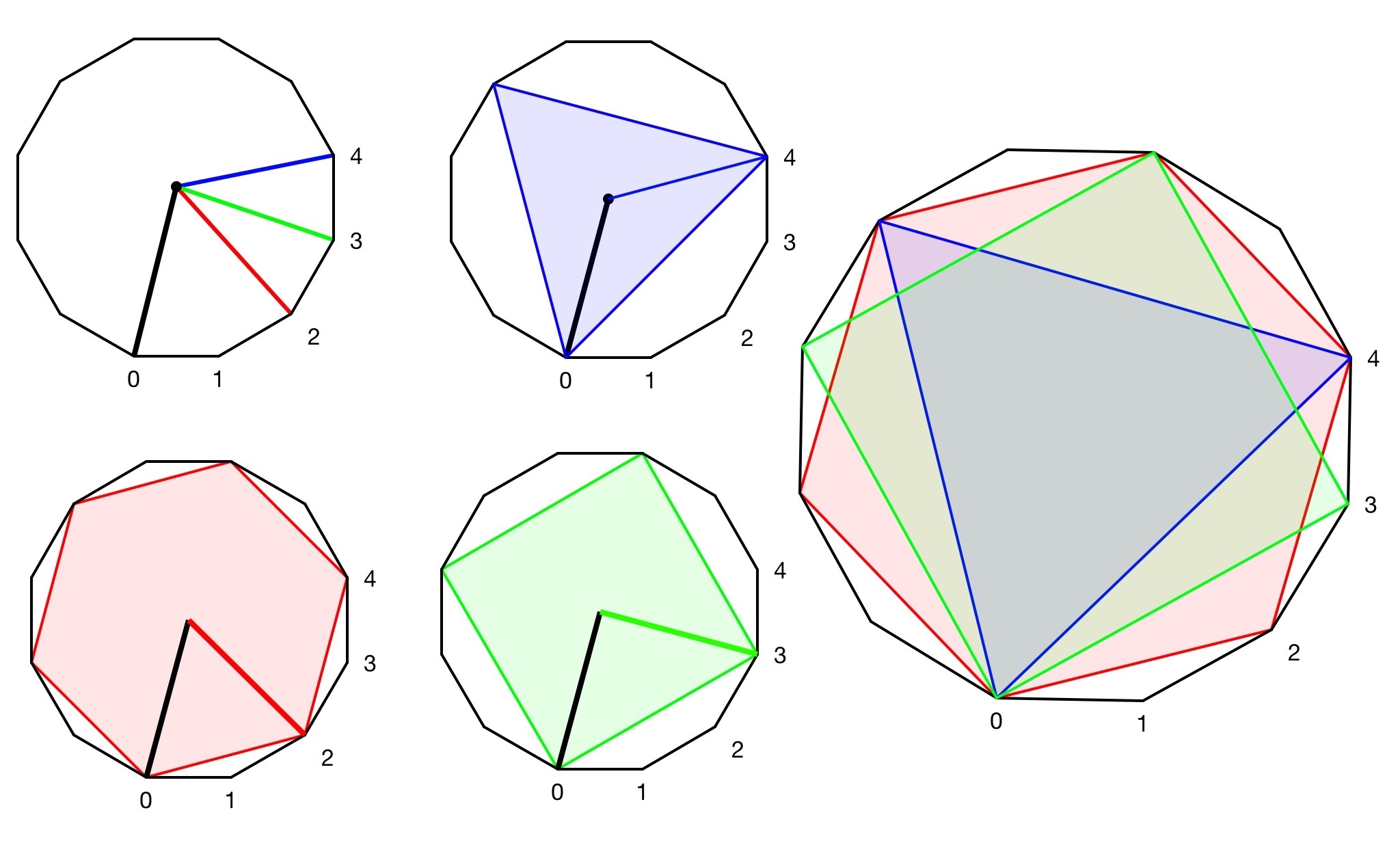Area Created by Joining Every Kth Vertex in a Polygon

\(~\)\(~\)\(~\)\(~\)\(~\)\(~\)\(~\)\(~\)\(~\)In this note, I will prove that the area formed by connecting every kth vertex of a regular polygon is \(\dfrac{a^2n(\cot{\frac{180k_i}{n}})(\csc^2{(\frac{180}{n})})(1-\cos{(\frac{k_i360}{n})})}{8k_i}\) when \(\textbf{k divides n without remainder}\) and n=number of sides of the original polygon and a represents the side length of the original polygon.
Can someone link me to a website so I can read up on it? I haven't been able to find one.
Step one: determining the number of sides
This step is rather simple. The number of sides of the original polygon R divided by k will yield the new polygon’s number of sides.
This is because #vertices=#edges. And since we’re dividing the number of vertices by k, the number of edges will be divided by k as well.
Therefore, the number of sides
Step two: determining the length of each side
 image
image
Ok, this is the hard part. For this part, I will refer to the second picture (also, NOTE 1,2,3,4 represent possible values of k). Begin by looking at the angled formed by . It’s quite obvious that each angle is congruent. Also, . Now, if we’re going to connect every kth vertex starting with vertex J, the angle (NOTE: point k varies in position) formed will be equal to .
Now, the one thing that remains constant no matter what vertex we chose is the length from the center of the original polygon to each vertex, AKA: the radius. The radius r is the hypotenuse of a right triangle with one leg as its apothem and the other leg being . The angle at P of the right triangle is . Therefore, .
Now, using Law of Co-sines, we can find M (length of segment ) in terms of and r (r is in terms of a and here).
Substituting for
Substituting for
Finding the area
This step isn't so hard, in this note, I prove that the area of any regular polygon can be represented as . (NOTE: that I substituted a=m from the other note and the number of sides is rather than n because in this note I’m using different variables than in the other note)
Plugging in our value of yeilds
.
.
Easy Math Editor
This discussion board is a place to discuss our Daily Challenges and the math and science related to those challenges. Explanations are more than just a solution — they should explain the steps and thinking strategies that you used to obtain the solution. Comments should further the discussion of math and science.
When posting on Brilliant:
*italics*or_italics_**bold**or__bold__paragraph 1
paragraph 2
[example link](https://brilliant.org)> This is a quote# I indented these lines # 4 spaces, and now they show # up as a code block. print "hello world"\(...\)or\[...\]to ensure proper formatting.2 \times 32^{34}a_{i-1}\frac{2}{3}\sqrt{2}\sum_{i=1}^3\sin \theta\boxed{123}Comments
Is this a new theorem? And can anyone build upon it such that k doesn't necessarily have to divide n?
Log in to reply
Probably not. You can probably use the same application of cosine rule to prove the case where k doesn't divide n; I did that when doing proving the case k = 2 for all n.
Log in to reply
How does your formula work? I'm plugging in x=cos60 for a hexagon and I'm getting 25/4. But I think that it should be 1/4
Log in to reply
I didn't check the formula, so my formula is probably invalid :<
If k∤n then you cannot have a regular polygon.
Thanks...But I am not getting it. Is there anyone who can explain me in simpler words..please?